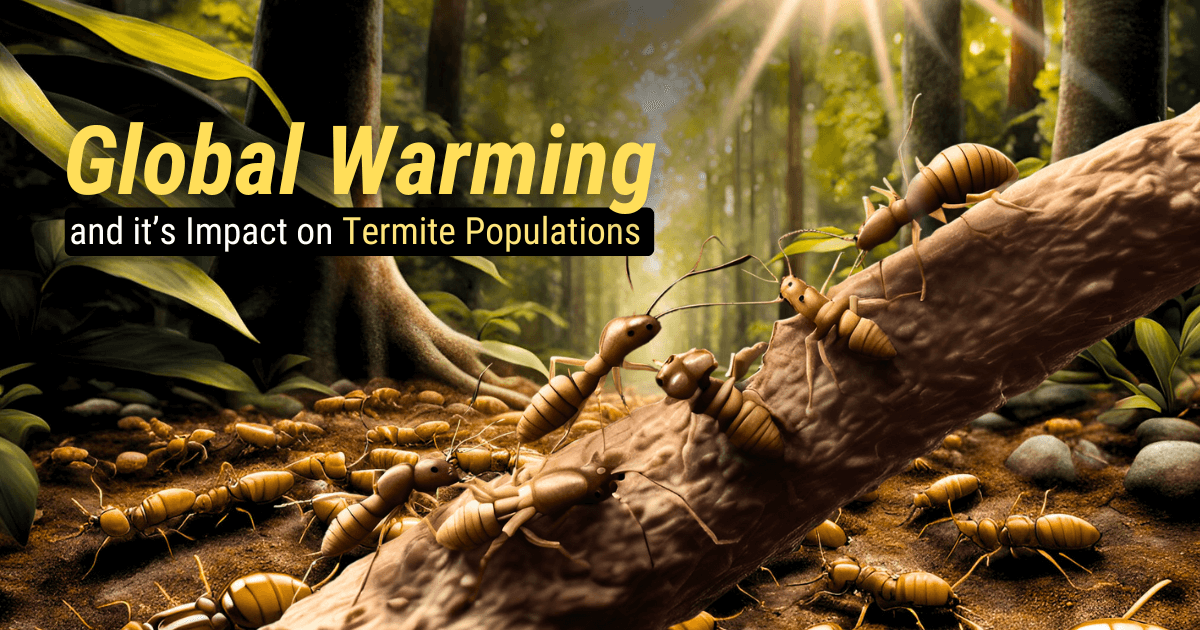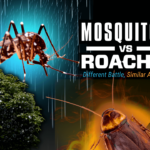INZECTO is revolutionizing the termite treatment market with the introduction of HydroTrail™
HydroTrail™ is the Newest Tool developed by INZECTO to Add to your 2025 arsenal to Increase Revenue and Save-Time with its Easy Application to Soil Surface. HydroTrail™ is a liquid that moves through the soil to a depth ( 2 – 5 inches ) where termites tunnel targeting Subterranean Termites both Native and Formosan termite species.
The explosive reproductive potential and aggressive nature of this termite genus has displaced the native subterranean termite in many areas and now accounts for most termite damage to structures in their expanded range. HydroTrail™ has been proven effective against this emerging menace and can help protect vital economic centers and historic buildings, while reducing costly repairs and business disruptions.
HydroTrail™ Directs Wood Seeking Termites into Termite Stations
When termites tunnel in between stations to infest a structure, HydroTrail™ directs them to the termite stations where they can be detected and controlled. Place early in the termite season for most successful structural protection or use any time of the year to provide maximum benefits.

Benefits of HydroTrail™
- Increases Termite Activity in Stations
- Directs termites away from structures and into termite stations
- Reduces the time for termites to discover termite stations
- “Connect the Stations” application for continuous detection between termite stations installed around structures
- Improves detection of termite infestations
- Proven efficacy for Native Subterranean and Formosan termites
- Concentrated Formula for dilution and application
- Biodegradable / Green Solution
- Effective for 90 Days
HydroTrail™ by INZECTO is Classified as a Non-Pesticide
HydroTrail™ is a “green” product 🌱and highly favored by today’s risk-averse and ecologically minded consumers. The primary component of HydroTrail™ is found in hundreds of common uses, including cosmetics, eye drops and ball point pen ink, which demonstrates its safety to human health and the environment.
HydroTrail™ is not regulated by FIFRA and does not require EPA Registration.
HydroTrail’s effectiveness in termite management programs has been published and the patent application has been accepted by the US Patent Office.

Leading insurance providers have been receptive to HydroTrail™ as a means of reducing exposure to termite damage claims.
In today’s highly litigious climate, these claims continue to grow in severity, and they recognize HydroTrail’s ability to reduce claims by reducing the time to detection and redirecting termites into stations and away from structures. Those carriers will consider credits for general liability insurance, lowering that premium, the overlaying excess umbrella premium, and the risk of incurring deductibles and claims frequency. Those carriers recognize the value of HydroTrail™ as the first innovation in termite treatment technology and how it can change in the adverse claims trends in this vital insurance sector.
The Science Behind HydroTrail™

Please visit the INZECTO booth #402 at PestWorld and inquire about special introductory pricing for early adopters of HydroTrail™.

How Global Warming Affects Termite Distribution
Termites thrive in warm, humid environments, and as the Earth’s temperature continues to rise, regions that were once too cold for termites are becoming suitable. According to studies, termites’ metabolic activity doubles with every 10-degree Fahrenheit increase in temperature. As temperatures warm, termites are more active and reproduce faster, leading to larger colonies and more damage.
Current U.S. Termite Distribution:
- Southern States: Termites are most active in the southeastern U.S., particularly in states like Florida, Texas, and Louisiana, where warm climates and high humidity create ideal conditions.
- Western U.S.: California and Arizona also have significant termite populations, particularly in areas with desert-like conditions that support both subterranean and drywood termites.

States Most Affected by Termite Migration
The effects of global warming on termite migration are already being observed. As temperatures rise, termites are beginning to move into states that once had cooler climates. States that were once considered “safe” from termite infestations are now facing increased risks.
- Midwestern States: States like Ohio, Indiana, and Illinois are seeing more frequent termite infestations. Subterranean termites, in particular, are becoming more common in these cooler states.
- Northeastern States: States like New York, New Jersey, and Pennsylvania are experiencing termite activity that was not as prevalent a few decades ago. Warmer summers and milder winters provide a suitable environment for termites to thrive.
- Northwestern States: The Pacific Northwest, including states like Oregon and Washington, is starting to see an uptick in termite populations, especially dampwood termites, due to the region's increase in temperature and moisture.

Species Migration: Which Termites Are On The Move
- Eastern Subterranean Termites: The most common termite species in the U.S., these are already found from the Gulf Coast to southern Canada. However, global warming is allowing them to spread further north and increase their activity in regions with milder winters.
- Formosan Subterranean Termites: One of the most destructive termite species in the world, Formosan termites are native to East Asia but have established large populations in the U.S., primarily in southern states. These termites are migrating northward, and we could see infestations in areas like Virginia and the Midwest in the coming decades.
- Drywood Termites: Common in southern California, Arizona, and Florida, these termites are expanding northward into drier, less humid regions as warming continues. States like Nevada and parts of Colorado are expected to experience increased activity.
Economic Impact of Termite Infestations
In the U.S., termite damage costs homeowners an estimated $5 billion annually, and this number could rise with increased termite populations due to global warming. The majority of this cost comes from the damage termites cause to wooden structures, including homes, businesses, and even infrastructure.
- Southern States are currently hardest hit, with Florida alone seeing termite-related damage costs approaching $500 million annually.
- Northeastern States like New York and New Jersey, which historically had minimal termite activity, are expected to see a rise in damage costs as these pests continue to migrate north.

Visit INZECTO at Booth #402 at NPMA PestWorld 2024
Book an Onsite Meeting with INZECTO at PestWorld
The INZECTO Team: Randi Lasley Enrico Paolo Levi and Dr. Phil Koehler look forward to seeing you there!



